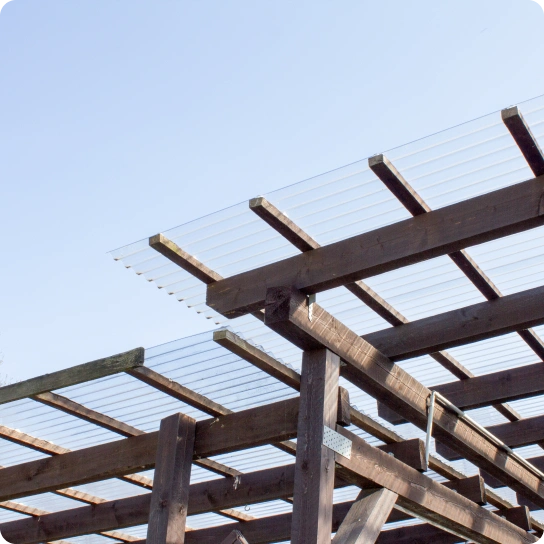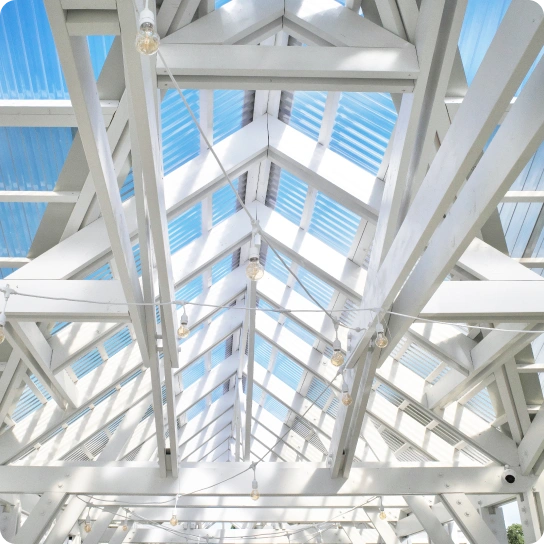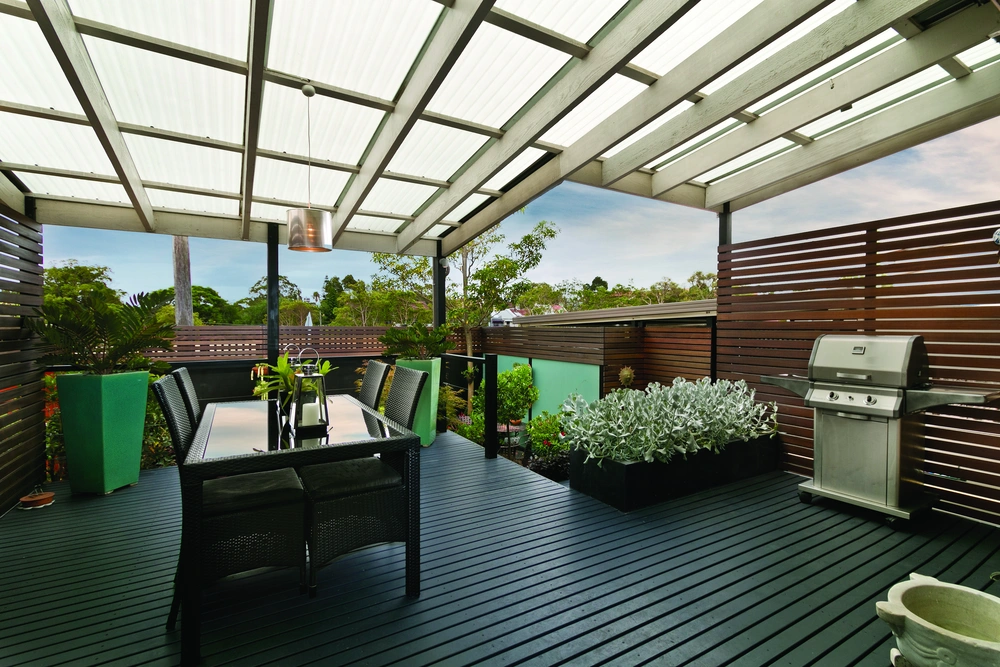Corrugated Polycarbonate Panels

Corrugated polycarbonate panels, Macrolux Rooflite, are a high-performance material. They are manufactured with high-tech polycarbonate resin for natural lighting in lightweight roofing. Corrugated polycarbonate sheets are ideal for residential and horticultural applications. Macrolux Rooflite is a very lightweight material with high resistance to weather conditions, including hail damage and surface erosion.
Also available in a cellular structure for increased durability and impact resistance.
Features and Advantages
Corrugated polycarbonate sheets are highly resistant to weather conditions, do not deform upon impact, and are among the most comprehensive sheets on the market due to their chemical resistance and UV protection.

Modern appearance

UV protection

Energy savings

Lightweight and recyclable

Self-extinguishing
Macrolux Rooflite polycarbonate sheets are ideal when seeking natural lighting and impact resistance. The corrugated polycarbonate sheets from Stabilit offer numerous benefits and come highly recommended for greenhouses, terrace covers, restaurant patios, cafes, bars, residential covers for walkways, garages, pools, and terraces. They provide significant savings in construction systems due to their easy maintenance and installation.
Stabilit’s translucent corrugated polycarbonate sheets have high natural light transmission, weather resistance, chemical resistance, flame propagation stoppage, high wind load resistance, and excellent appearance. Macrolux Rooflite comes with a 10-year warranty against light transmission loss and a 10-year warranty against hail breakage.
Applications
Macrolux Rooflite corrugated polycarbonate sheets provide lighting and security with a 10-year warranty on light transmission and hail impact resistance up to 19 mm in diameter.
Residential
Macrolux Rooflite corrugated polycarbonate sheets can be used in residential areas. Being a polycarbonate sheet allows for design freedom, lightness for transportation and installation, and provides security due to its high resistance. Use it in terraces, laundries, patios, garages, door and window canopies.
Greenhouses
Ideal for covers and sides in greenhouses, as it enhances crop productivity with UV protection and high impact resistance. Macrolux Rooflite corrugated polycarbonate sheets block more than 99.9% of harmful ultraviolet radiation transmission. Its co-extrusion UV barrier protects the sheet from degradation and discoloration caused by ultraviolet rays. It remains stable in extreme weather conditions (-40°C to +120°C).

Residential Roofline
Macrolux Rooflite corrugated polycarbonate sheets can be used in residential areas. Being a polycarbonate sheet allows for design freedom, lightness for transportation and installation, and provides security due to its high resistance. Use it in terraces, laundries, patios, garages, door and window canopies.

Greenhouses Rooflite
Ideal for covers and sides in greenhouses, as it enhances crop productivity with UV protection and high impact resistance. Macrolux Rooflite corrugated polycarbonate sheets block more than 99.9% of harmful ultraviolet radiation transmission. Its co-extrusion UV barrier protects the sheet from degradation and discoloration caused by ultraviolet rays. It remains stable in extreme weather conditions (-40°C to +120°C).
Corrugated Polycarbonate Sheets
Macrolux Rooflite polycarbonate sheets are designed for simple and quick installation. Our corrugated polycarbonate is one of the most durable and resistant sheets on the market, also available in special FrostyGlass layers: These polycarbonate sheets have a frosted glass appearance and provide greater light diffusion. Request information now and install reliable laminates.
Image gallery
Installation of Corrugated Polycarbonate Sheets for Various Applications.







